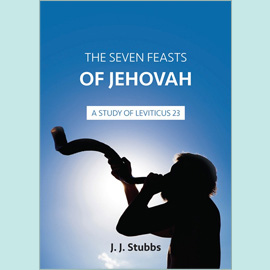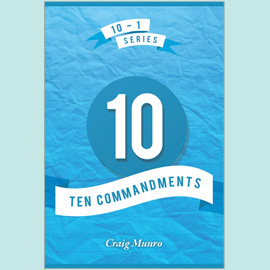When did the believer die to sin (Rom 6.2)? Was it at conversion or was it when the Lord was crucified?
It is helpful to see that in the passage of Romans 6 the expression, "died to sin" (Newberry margin) is the same used of Christ in v.10. Having died to sin is true of every Christian whether they realise it or not. Christ’s condition of having died unto sin is ours as well, because we are in Him, but our Christian profession should of course acknowledge this likewise. In Christian teaching when Christ died to sin the believer as in Him died too. This is in God’s reckoning. Whatever, then, the expression signifies in the one case, it must also be understood to signify in the other. This declaration, then, that Christ died to sin, explains in the clearest manner the meaning of the expression "died to sin" (v.2), proving that it signifies having died to the guilt of sin; for in no other sense could our Lord Jesus Christ die to sin.
Romans 5 constitutes the background of the teaching of Romans 6. Paul in vv.2-14 is answering some who would argue that one may sin in order to get grace, because, "Where sin abounded, grace did much more abound" (5.20). Paul shows the preposterousness of the idea of the believer continuing in sin. Then in 5.12-21 we have the two heads – Adam and Christ. The believer belongs to the new race under the headship of Christ. What then does the expression "died to sin" mean and when did it take place? It is not that the believer has died to the power or influence of sin, because such an idea would not be true of Christ in His having died to sin on the cross. He has died to every question of sin and to all its claims for judgment upon the believer. The believer as having died to sin is justified or made free from sin (v.7). This position and blessing the believer comes into the good of the moment conversion takes place through the exercise of faith in Christ. The effect of the act of Christ the Head reaches to every believer who forms the new race. This is a wonderful truth and ought to give the believer great assurance.
John J Stubbs
I know that this is an old question, but does not 1 Corinthians 11.5 make sense only when it refers to the woman always covering her head at prayer, whether in the assembly or at other times?
The first half of 1 Corinthians 11 (vv.1-16) is concerned with the truth of Headship and takes us back to creation, whilst the second part of the chapter (vv.17-34) deals with the truth of Lordship and goes back to redemption.
Two main approaches have been taken on the chapter. These are as follows:
1) In the second section (vv.17-34), the expression "ye come together" occurs five times (vv.17,18,20,33,34). The latter part of the chapter therefore deals with occasions when the assembly is gathered together. This suggests that vv.1-16 are more general and consequently should apply at all times. Verses 4-5 are thus teaching that, whenever prayer is made, the man should have his head uncovered and the woman should have her head covered.
2) Undue significance should not be placed on the expression "ye come together", it being used only in the second half of the chapter. Since much of the teaching in the epistle is concerned with the assembly being gathered together, passages such as vv.1-16 should be viewed as applying to assembly gatherings, especially as there is an allusion to praying and prophesying.
The present writer leans to the first view. He would thus agree with the questioner when he considers that 1 Corinthians 11.5 makes sense "only when it refers to the woman always covering her head at prayer, whether in the assembly or at other times". It would, no doubt, be agreed that the prophetic ministry of the four virgin daughters of Philip the evangelist (Acts 21.9) would have been exercised in the home, certainly not in an assembly gathering. Would not each of these women have had her head covered when exercising the gift?
David E West









